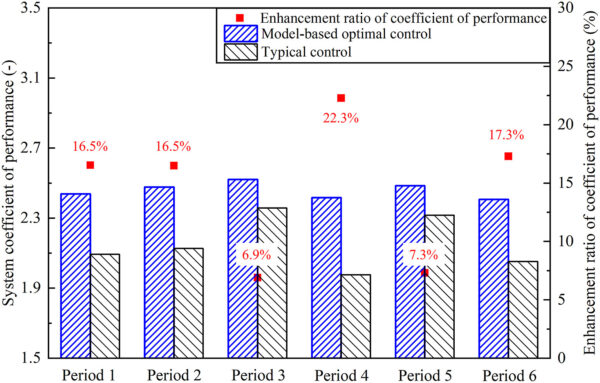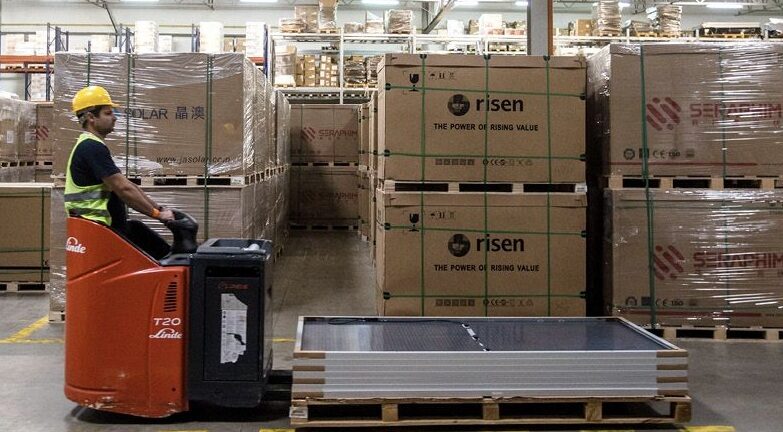Scientists led by China’s Dongguan University of Technology have proposed a novel control approach for water-to-water heat pumps that uses carbon dioxide (CO2) as refrigerant. The model-based optimal control (MC) was tested against a typical control (TC) mechanism over a virtual heat pump, improving the COE by up to 14.6%.
“An efficient optimization strategy for the MC of water-to-water CO2 heat pump, aiming at reducing computational burden remains undeveloped. Hence, this study aimed to develop an MC for improving the COP of water-to-water CO2 heat pump by identifying optimal variables,” the group said. “System models were derived using extensive data from a virtual CO₂ heat pump whose reliability was validated prior to further simulations.”
The water-to-water CO2 heat pump contained an evaporator (ET), a liquid receiver (LR), an internal heat exchanger (IHX), a compressor (CM), a gas cooler (GC), an expansion valve (EX), and two circulation pumps (PMs). The TC employs fixed setpoints and simple control loops to regulate specific parameters without considering system-wide optimization.
To develop the more refined MC, the team has constructed a virtual CO2 heat pump in MATLAB and REFPROP. 3,969 cases were operated to identify system models, describing how the heat pump responds to changes in operating conditions. An experimental setup was designed to validate the system, showing an average error of 4.4% for the gas cooler outlet temperature and 7.4% for the compressor power.
The scientists analyzed the system components' thermodynamic behavior and developed an optimization algorithm to maximize COE by identifying optimal discharge pressure and gas cooler outlet water temperature setpoints. They tested the system in three case studies for both the MC and TC models.

Image: Dongguan University of Technology, Case Studies in Thermal Engineering, CC BY 4.0
In the first case study, researchers fixed the evaporator mixture inlet temperature at 18 C and randomly set the gas cooler inlet water temperature between 29 C and 35 C. The target outlet temperature at the gas cooler varied between 40 C and 48 C. The MC achieved a 9.9% higher COP than the TC, with an average COP of 2.49 compared to 2.265 for TC.
In the second case study, the gas cooler inlet water temperature was fixed at 32 C, while the evaporator mixture inlet temperature ranged from 17 C to 19 C. The target outlet temperature at the gas cooler was randomly varied between 40 C and 48 C. The MC outperformed the TC by 8%, with an average COP of 2.482 compared to 2.3 for TC.
In the final case study, the evaporator mixture inlet temperature ranged from 17 C to 19 C, the gas cooler inlet water temperature varied between 29 C and 35 C, and the outlet water temperature at the gas cooler ranged from 40 C to 48 C. The MC achieved a 14.6% higher efficiency, with an average COP of 2.458 compared to 2.145 for TC.
“The computational time of the system with multiplexed optimization strategy was reduced by 42.2% to 47.1% compared to traditional optimization strategy,” the team said. “These results indicated that the formulated MC could effectively enhance the energy efficiency of the water-to-water CO2 heat pump. The developed multiplexed optimization strategy effectively reduced the computational burden and slightly decreased the average COPs. Thus, this study provided a guideline for implementing MC in water-to-water CO2 heat pumps, contributing to COPs enhancement.”
They presented their results in “A study of optimal control approaches of water-to-water CO2 heat pump for domestic hot water use,” which was recently published in Case Studies in Thermal Engineering. Scientists from China’s Dongguan University of Technology, Guangdong University of Technology, and Norway’s Norwegian University of Science and Technology jointly conducted the research.
This content is protected by copyright and may not be reused. If you want to cooperate with us and would like to reuse some of our content, please contact: editors@pv-magazine.com.



By submitting this form you agree to pv magazine using your data for the purposes of publishing your comment.
Your personal data will only be disclosed or otherwise transmitted to third parties for the purposes of spam filtering or if this is necessary for technical maintenance of the website. Any other transfer to third parties will not take place unless this is justified on the basis of applicable data protection regulations or if pv magazine is legally obliged to do so.
You may revoke this consent at any time with effect for the future, in which case your personal data will be deleted immediately. Otherwise, your data will be deleted if pv magazine has processed your request or the purpose of data storage is fulfilled.
Further information on data privacy can be found in our Data Protection Policy.